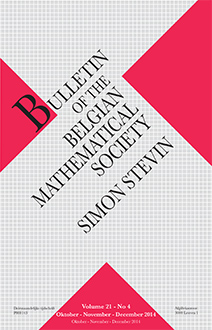Abstract
In this paper we study a model of population which is described by positive solutions to the nonlinear boundary value problem $$ \left\{\begin{array}{ll} -\Delta u = au-bu^{2}-c\frac{u^{2}}{1+u^{2}}-\epsilon, & x\in \Omega,\\ \mathbf{n}.\nabla u+ g(u)=0 , & x\in\partial \Omega.\\ \end{array}\right. $$ Here $\Omega$ is a bounded smooth domain of $\mathbb{R}^{N},$ $\Delta$ is the Laplacian operator, $a,$ $b,$ $c,$ $\epsilon$ are positive parameters and $g \in C^{1}\Big([0,\infty),$ $[\theta,\infty)\Big)$ is decreasing for some $\theta > 0.$ This model describes the dynamics of the fish populations. Our existence results are established via the well-known sub-super solution method.
Citation
S.H. Rasouli. "On a population model with nonlinear boundary conditions arising in ecosystems." Bull. Belg. Math. Soc. Simon Stevin 26 (1) 63 - 69, march 2019. https://doi.org/10.36045/bbms/1553047228
Information





